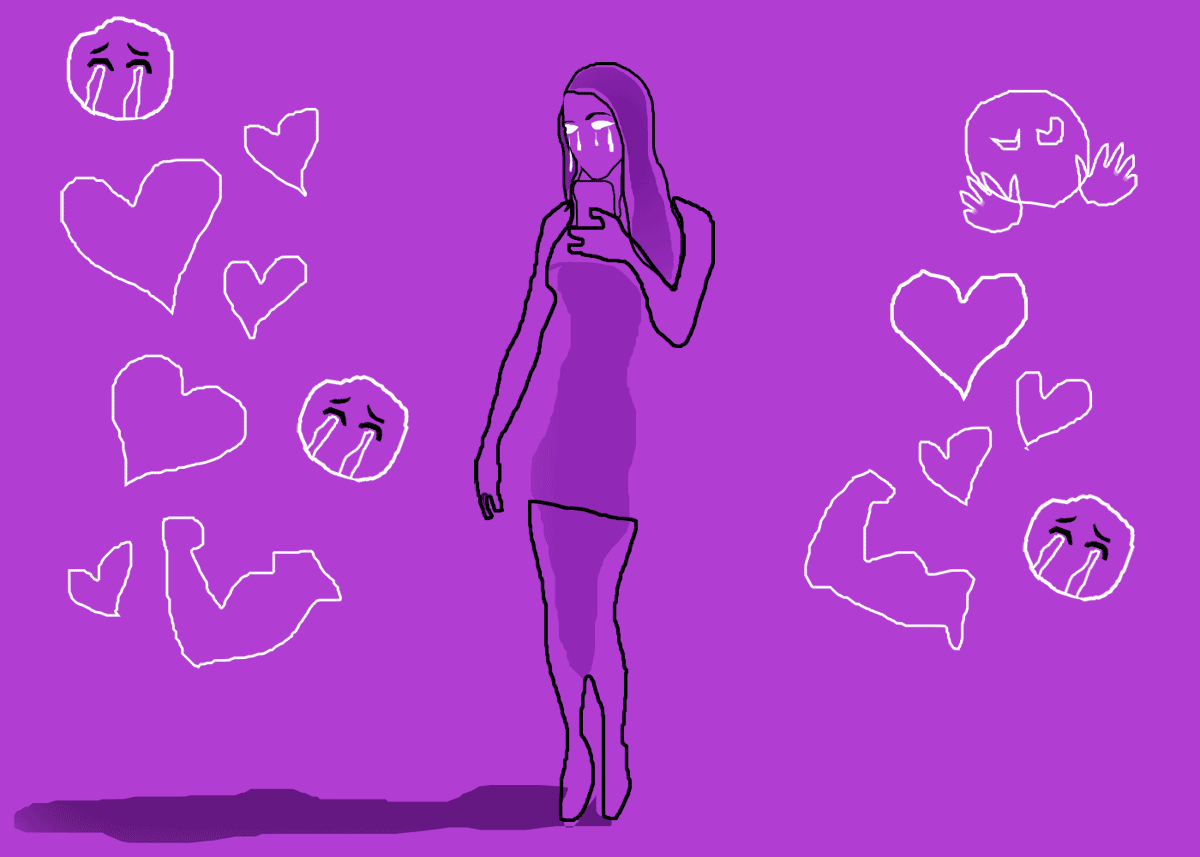It is 'when someone uses their emotional problems to hook an audience on the Internet.'
It essentially amounts to 'performing sadness online for sympathy and/or attention,' explains Sandeep Goyal.

The term 'sadfishing', defined by the Journal of American College Health in 2021, refers to social media users who 'exaggerate their emotional state online to generate sympathy'.
It could be in the form of a sad photo, an ominous quote, or a vague post.
It was actually journalist Rebecca Reid who coined the term in 2019 after a questionable Instagram post by Kris Jenner featuring her daughter Kendall Jenner (28.2 million Twitter followers).
In the post, Ms Jenner described her daughter's 'debilitating struggle' with acne and received a large amount of sympathetic responses from her followers.
However, it was later revealed that her post was just an elaborate marketing gimmick for her skincare partnership with brand Proactiv, and Ms Reid labelled her behaviour as 'sadfishing.
Ms Reid explained sadfishing as 'When someone uses their emotional problems to hook an audience on the Internet.'
She described it as the 'emotional equivalent of clickbait'. It essentially amounts to 'performing sadness online for sympathy and/or attention,' she said.
Closer home, Poonam Pandey's death hoax in February 2024, intended to raise awareness for cervical cancer, sparked much debate and led to much furore.
While initial reports led many to believe she had died, it was later revealed as a publicity stunt.
This generated significant media attention and online searches for cervical cancer but also attracted huge criticism for its approach.
Well, all that Ms Pandey was doing was some exaggerated sadfishing.
A Rs 100 crore defamation case was nevertheless slapped on Ms Pandey and her former husband Sam Bombay.
Faizan Ansari, a resident of Mumbai, filed a lawsuit stating that Ms Pandey and Mr Bombay orchestrated a 'false conspiracy of death', thus trivialising the seriousness of cancer for their gains, and manipulating people's emotions.
There is also the famous case of Nashville influencer Tiffany Mitchell (216,000 Instagram followers) who was ridiculed and pummelled on social media after posting pictures on Instagram of her motorbike crash, which many said looked staged.
Ms Mitchell vehemently denied this, but the public view was that she was trying to gain attention by orchestrating a traumatic event.
There were even accusations of a brand being involved, but these were never proved.
Sadfishing can happen in advertising too.
In 2017, McDonald's aired an ad in which a mother told her son all of the ways that he wasn't like his dead father -- except for his preferred fast-food order.
McDonald's were heavily trolled for exploiting bereavement and had to retract the ad.
There was an earlier similar example in 2015 when life insurer Nationwide ran a morbid and awfully distasteful stunt on the Superbowl chronicling all the things a young boy was missing out on.
Why? Because he was dead. The ad was heavily criticised.
Of the 240,000 comments made online during the telecast, 64 per cent were negative. The ad was immediately taken down.
Why do brands ratchet up sad emotions?
An Ipsos report would have us believe that emotional messages can be processed automatically, using lower levels of conscious attention, and thus place a lower cognitive load on our processing and memory abilities.
Sad ads, in fact, increase brand value. According to research agency Mirriad, there was a 17 per cent increase in the perception of a brand's value after watching an ad that was sad. That's some research one would hate to believe.
But now to a contra point-of-view and two truths of human behaviour:
1. Sometimes unloading sadness makes us feel better.
2. Sometimes sadness is necessary to feel happiness.
Cadbury in the UK has for years run campaigns that have focused on uncomfortable social issues like loneliness to demonstrate that there 'is a glass, and that too a half full one in everyone'. And the advertising has worked.
Similarly, the ad for Macmillan Cancer Support-- one of the UK's most loved -- is full of negative emotions.
The 2021 advert 'Whatever It Takes' is a heart-wrenching compilation of moments during people's cancer journeys.
The spot ends its narrative without positive resolution -- the emotional rawness of the final scene where a woman is shown inconsolably weeping in a nurse's arms -- makes the creative all the more powerful.
The Nike Dream Crazier award-winning ad focuses on the thorny subject of women being stigmatised for showing emotion in sports but has garnered over a million views. Everyone loves it.
Negativity, tension and conflict can be advertising's secret sauces. But sadfishing is avoidable unless as William Blake put it:
Joy and woe are woven fine,
A clothing for the soul divine,
Under every grief and pine,
Runs a joy with a silken twine.
Sandeep Goyal is chairman of Rediffusion.
Feature Presentation: Ashish Narsale/Rediff.com












 © 2025
© 2025